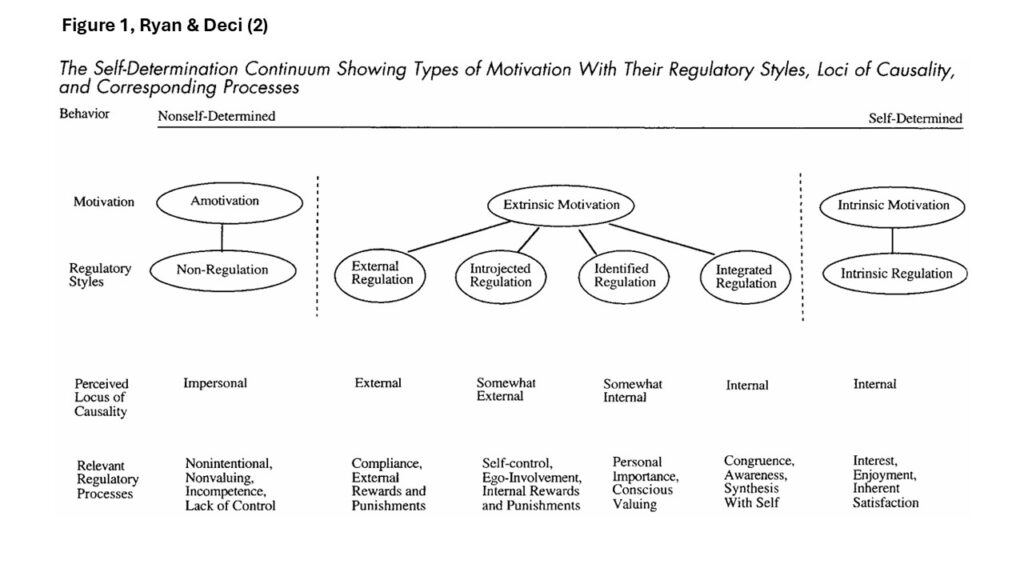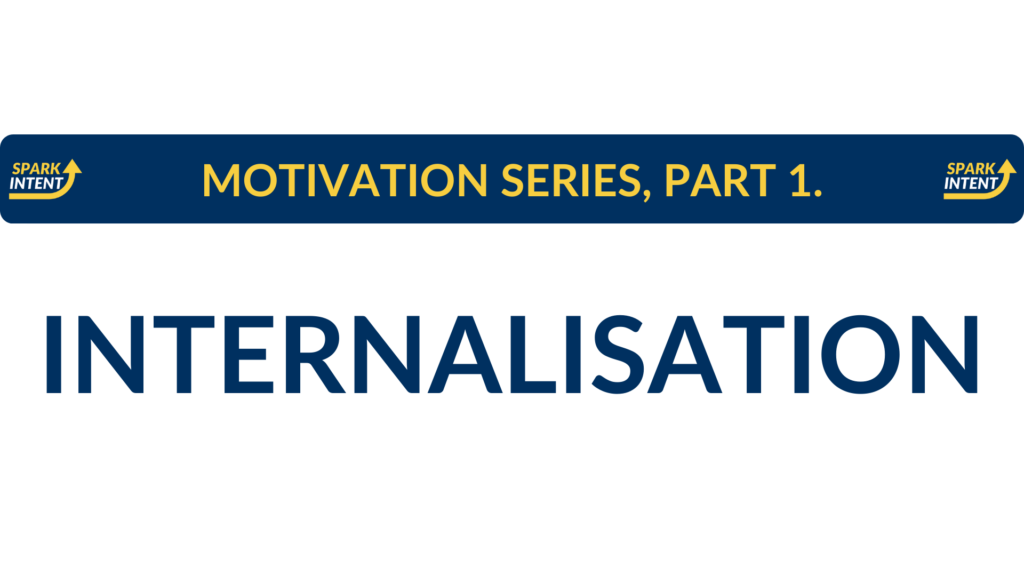Imagine a workplace where every employee is deeply engaged in their role, intent on giving their best effort as standard, and where a palpable connection exists between individuals, leadership, and the company’s purpose.
I’ve experienced this reality firsthand, helped create it, and lived through the challenges it brings. It’s a process that demands commitment, persistence, and continuous refinement—but the rewards, for everyone involved, are undeniable.
Motivation: Not just a unitary phenomenon
Motivation concerns what ‘moves’ people to action (1).
Take Vicky, a lab-based scientist in infectious diseases working for a pharmaceutical company. She performs two tasks that she views as routine but attributes to different motivations:
1. Vicky must log her hours in a timesheet. Most of the time, she forgets and scrambles to fill it in before leaving on Friday. She completes it half-heartedly because “it’s company policy, and my boss gave me a warning during my last review.”
2. Vicky cleans her desk, monitor and keyboard in meticulous fashion every morning and afternoon. “It’s worth getting in a little early and leaving a little late to make sure I keep myself and other’s around me safe, especially when working with nasty bacteria all day!”.

Our friend, Vicky. Loves a good desk-clean!
If we viewed motivation as a single, unitary phenomenon, we’d be satisfied that Vicky is motivated to complete both tasks. End of. Job done. All good?
Nope.
High-quality leaders wouldn’t accept ‘half-hearted’ efforts or see value in employees simply adhering to company policy to avoid discipline. Let’s explore the complexities of motivation.
Uncovering Complexities
The reasons behind what moves us are important, but things get even more interesting when we decipher the different types and sources of motivation. Understanding these can explain the difference between ‘half-hearted’ versus ‘meticulous,’ or ‘forgets’ versus ‘every morning‘.
Ryan and Deci (2) view motivation on a continuum (Figure 1). At one end, fully self-determined motivation is intrinsically regulated and stems from an internal locus of causality (i.e., the belief that we control our actions). This type of motivation fosters feelings of interest and enjoyment, as we are moved to act for the inherent satisfaction of the activity itself (2).

At the opposite end of the continuum lies non-self-determined motivation, also known as amotivation. Amotivation is the absence of intention to act, often due to not valuing the activity, feeling incompetent, or not expecting any meaningful outcome (2).
Vicky’s cleaning routine likely falls near identified or integrated regulation. Without getting bogged down by terminology, it’s clear her behaviour stems from an internal desire to prevent a disastrous outbreak. Her cleaning is synthesised with her role as a scientist, driven by awareness and a strong personal value placed on safety. Her internalised motivation leads to consistent action (‘every day’), intentional effort (‘meticulous’), and sacrifice (“arriving early and staying late”).
The timesheet task, on the other hand, falls on the left side of the continuum. It’s externally regulated, driven by compliance and the avoidance of punishment. If Vicky weren’t told to do the task, she wouldn’t. There’s little inherent value attached to it. However, she likely values her role enough to do just enough to avoid job loss. This type of motivation is common, where actions are driven by behaviours valued by significant others to whom we feel attached (2). Vicky’s connection to her much-loved job through her boss regulates her timesheet completion, but there’s no consistency (‘forgets’) or effort (‘half-hearted’).
I thrive on walking into environments where avoidance of punishment or pursuit of external rewards is the dominant motivation. To me, these are ripe opportunities for incredible change. Internalisation is the goal and supportive leadership the catalyst.
Unlocking Opportunities
I thrive on walking into environments where avoidance of punishment or pursuit of external rewards is the dominant motivation. To me, these are ripe opportunities for incredible change. Internalisation is the goal and supportive leadership the catalyst.
Internalisation refers to the process of shifting motivation from external to internal. It involves adopting external values, beliefs, or behavioural regulations and making them your own (1). Strictly speaking, internalisation covers the shift from amotivation to identified regulation, while a full shift to self-determination is called integration (1,2).
In simple terms, creating an environment that fosters internalisation means moving one step closer to employees who intend to give more effort, spend more time, and find more creative ways to succeed for their own benefit and that of those around them. Imagine the impact of shifting the motivation of 20 team members from ‘somewhat external’ to ‘somewhat internal’ for key performance tasks. The improvements in team dynamics, employee satisfaction, and company performance would be immense!
Vicky’s example only highlights two tasks for the sake of explaining the continuum. In reality, workplace demands are much more varied, wrapped in the bigger picture of company purpose, values, accepted behaviours, and leadership quality. Plus, single-task motivation is too reductionist. It overlooks the infinite number of other possible ways Vicky could spend her energy, time, and effort.
For example, what if Vicky occasionally skips cleaning to make it on time for her weekly tennis lesson (yes, she plays tennis)? What if she’s hungry? What if her hands are sore? One day we will explore the underpinning motivational needs that differentiate those with strong habit formation, grit or resilience those who lack the ability to ‘stay in the fight’.
Spark Intent would love to approach these problems with you!
Wrap up, and Next Steps
Creating a culture of motivational awareness gives leaders the insight needed to understand when and why internalisation can occur, and who it impacts.
The tools in our arsenal for fostering internal regulation are rooted in the three basic psychological needs (1) essential for individual development, growth, integrity, and well-being:
- Autonomy
- Competence
- Relatedness
In the next article, we’ll dive deeper into how these needs shape motivation and help us win our psychological battles.
If you’ve enjoyed the read or want to know more, please share, like, or message me. If you didn’t, let me know—I’m always ready to learn!
1. Ryan RM, Deci EL. Self-Determination Theory: Basic Psychological Needs in Motivation, Development, and Wellness. Self-Determination Theory: Basic Psychological Needs in Motivation, Development, and Wellness. New York: Guildford Press; 2017.
2. Ryan RM, Deci EL. Self-Determination Theory and the Facilitation of Intrinsic Motivation, Social Development, and Well-Being. American Psychologist. 2000;55(1):68–78.

